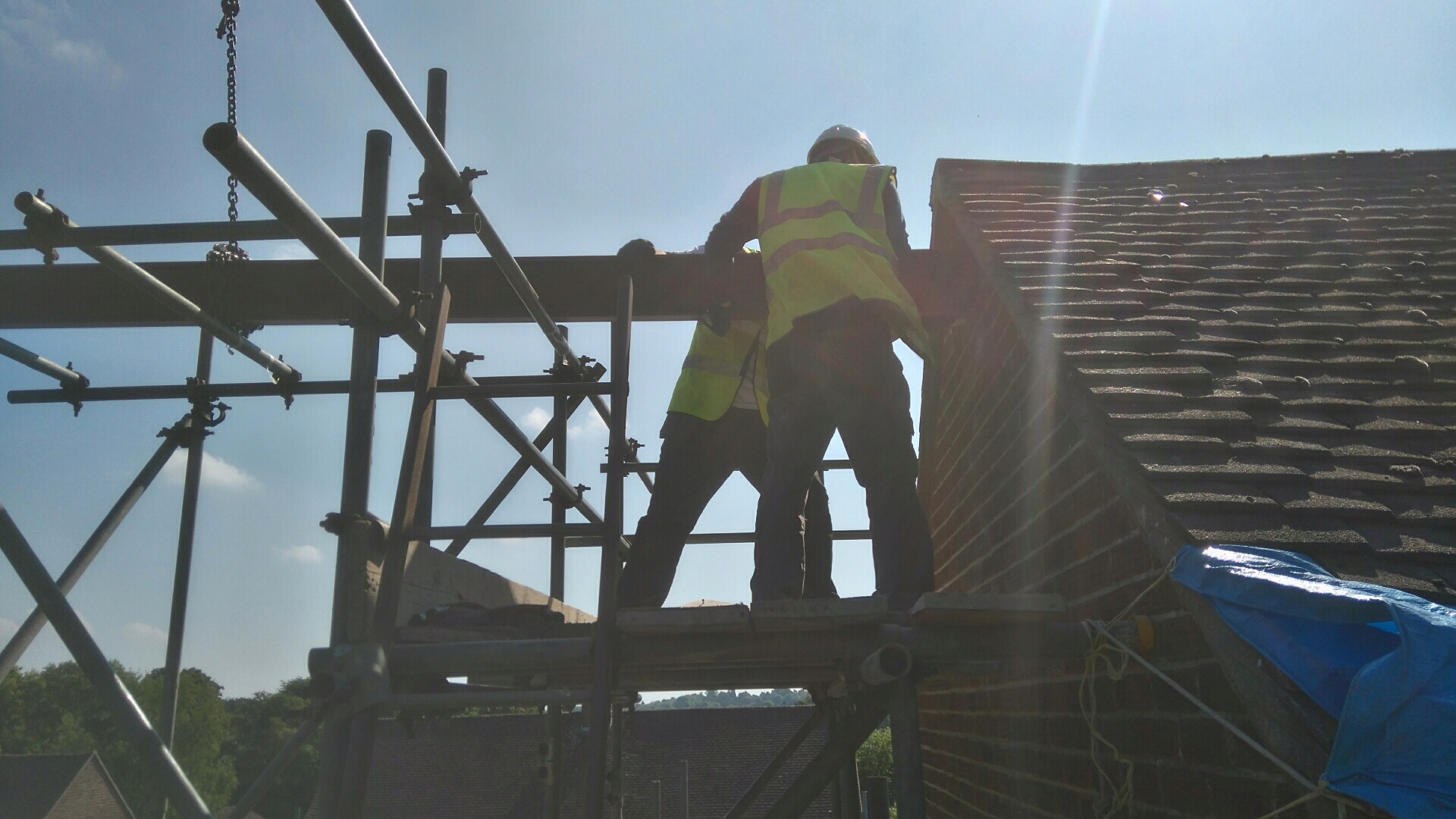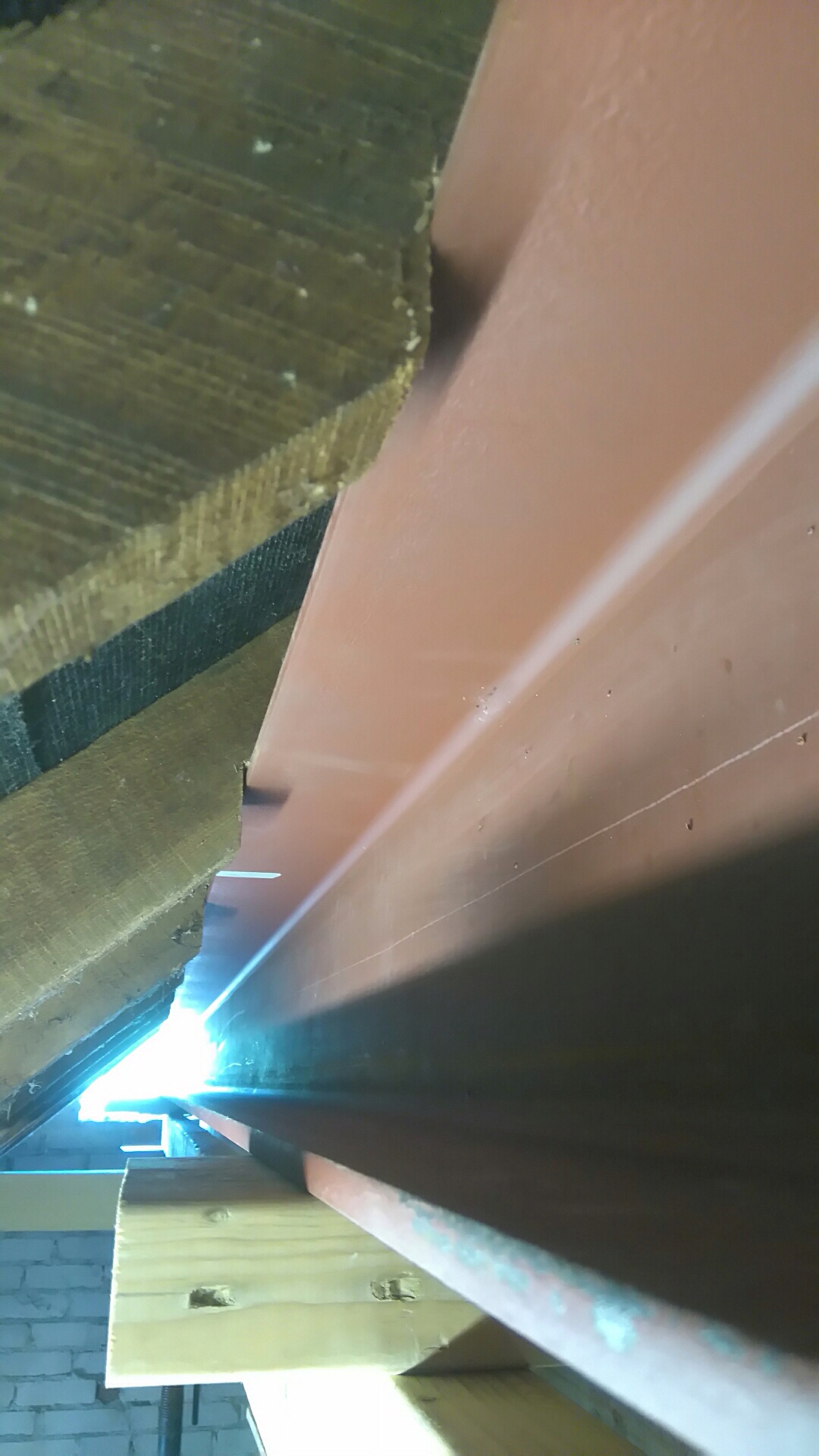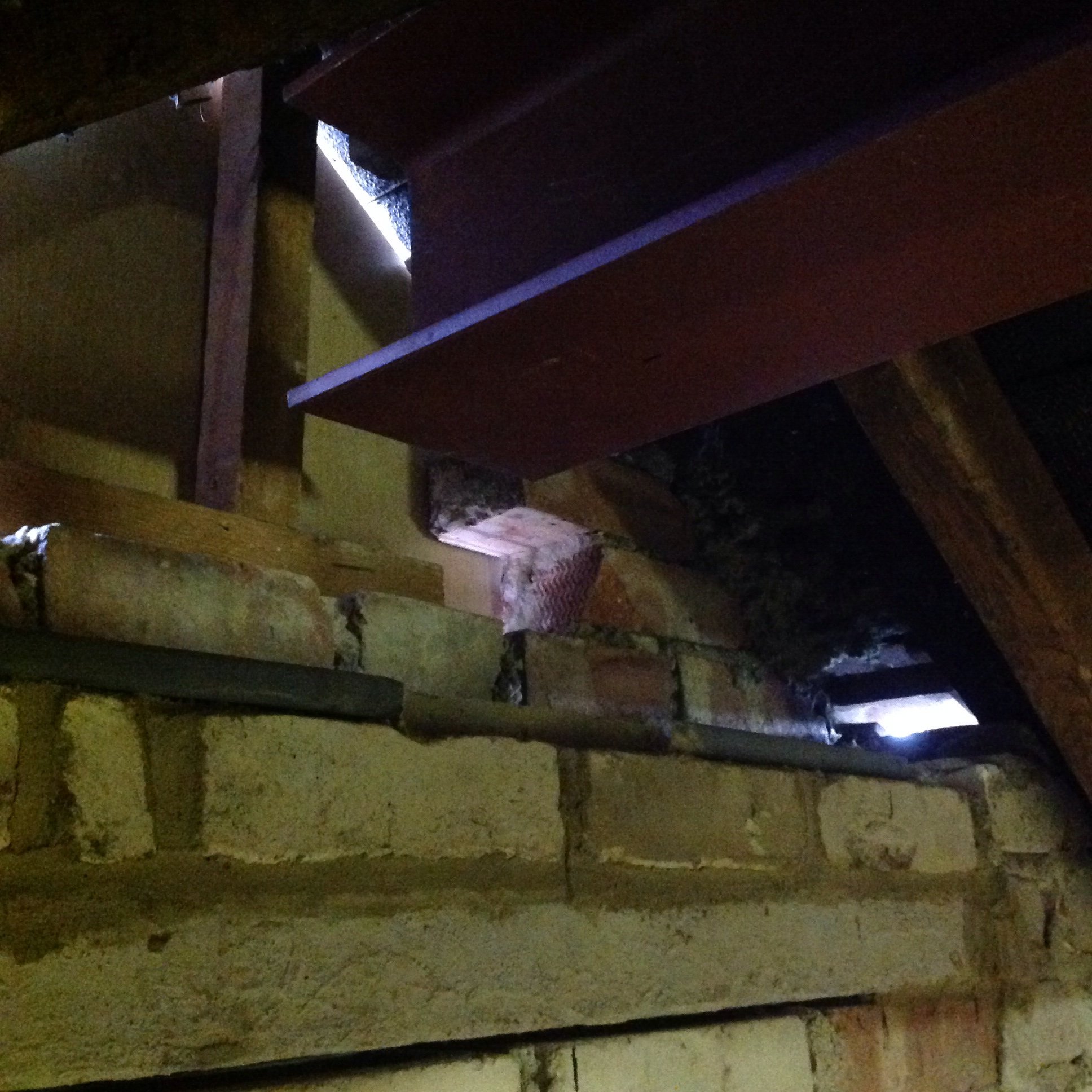Reply from SE...
-----
The steel beam needs to be a 305x 165 x 40UB s275. Or a 203 x 203 x 46 UC s275.
As the beam has no real end lateral restrain, i.e. It can rotate as there is insufficient brick work to stop the beam from rotating, British Standards request me to increase the beam design by 1.2L. As the beam is laterally un-restrained.
Bearing plates are required if the block work has a compressive strength less than 7.00N/mm.sq. this is your builders call. Personally, I prefer seeing them in.
-----
I have white engineering bricks as used in 1950...
-----
The steel beam needs to be a 305x 165 x 40UB s275. Or a 203 x 203 x 46 UC s275.
As the beam has no real end lateral restrain, i.e. It can rotate as there is insufficient brick work to stop the beam from rotating, British Standards request me to increase the beam design by 1.2L. As the beam is laterally un-restrained.
Bearing plates are required if the block work has a compressive strength less than 7.00N/mm.sq. this is your builders call. Personally, I prefer seeing them in.
-----
I have white engineering bricks as used in 1950...




